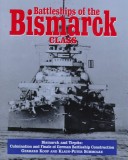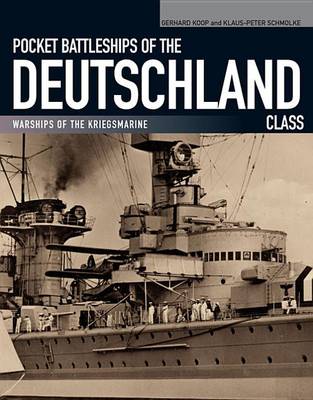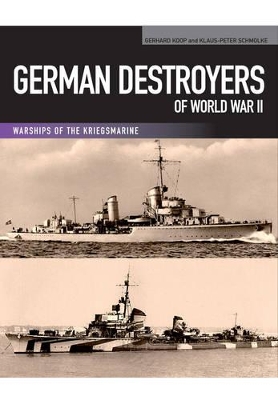Warships of the Kriegsmarine
6 total works
The Bismarck class warships were among the m ost formidable ever built. Using contemporary photographs of these vessels and their crews the authors trace the develop ment and eventual destruction of the Bismarck itself and her sister ship, the Tirpitz. '
This text serves as a valuable reference wor k on two formidable German warships - the Scharnhorst and Gn eisenau. A detailed history of the wartime career of these s hips is also included '
The warships of the World War II era German Navy are among the most popular subject in naval history with an almost uncountable number of books devoted to them. However, for a concise but authoritative summary of the design history and careers of the major surface ships it is difficult to beat a series of six volumes written by Gerhard Koop and illustrated by Klaus-Peter Schmolke. Each contains an account of the development of a particular class, a detailed description of the ships, with full technical details, and an outline of their service, heavily illustrated with plans, battle maps and a substantial collection of photographs. These have been out of print for ten years or more and are now much sought after by enthusiasts and collectors, so this new modestly priced reprint of the series will be widely welcomed. This volume is devoted to the six ships from Emden to Nurnberg that were built between the wars. They were primarily intended for commerce-raiding, but the war gave them few opportunities for such employment, although they did provide useful support for key naval operations in the Baltic and North Sea.
Two were lost in the 1940 Norway campaign, but the remainder survived for most of the conflict.
Two were lost in the 1940 Norway campaign, but the remainder survived for most of the conflict.
The warships of the World War II era German Navy are among the most popular subject in naval history with an almost uncountable number of books devoted to them. However, for a concise but authoritative summary of the design history and careers of the major surface ships it is difficult to beat a series of six volumes written by Gerhard Koop and illustrated by Klaus-Peter Schmolke. Each contains an account of the development of a particular class, a detailed description of the ships, with full technical details, and an outline of their service, heavily illustrated with plans, battle maps and a substantial collection of photographs. These have been out of print for ten years or more and are now much sought after by enthusiasts and collectors, so this new modestly priced reprint of the series will be widely welcomed. This volume covers the Admiral Hipper class, among the largest heavy cruisers to serve in World War II.
Intended to be a class of five, they enjoyed contrasting fortunes: Seydlitz and Lutzow were never completed; Blucher was the first major German warship sunk in action; Admiral Hipper became one of the most successful commerce raiders of the war; while the Prinz Eugen survived to be expended as a target in one of the first American nuclear tests in 1946.
Intended to be a class of five, they enjoyed contrasting fortunes: Seydlitz and Lutzow were never completed; Blucher was the first major German warship sunk in action; Admiral Hipper became one of the most successful commerce raiders of the war; while the Prinz Eugen survived to be expended as a target in one of the first American nuclear tests in 1946.
This book includes detailed statistics and the career history of the Deutschland, Admiral Scheer and Admiral Graf Spee.
German Destroyers of World War II
by Gerhard Koop and Klaus-Peter Schmolke
Published 21 November 2002
The warships of the World War II era German Navy are among the most popular subject in naval history with an almost uncountable number of books devoted to them. However, for a concise but authoritative summary of the design history and careers of the major surface ships it is difficult to beat a series of six volumes written by Gerhard Koop and illustrated by Klaus-Peter Schmolke. Each contains an account of the development of a particular class, a detailed description of the ships, with full technical details, and an outline of their service, heavily illustrated with plans, battle maps and a substantial collection of photographs. These have been out of print for ten years or more and are now much sought after by enthusiasts and collectors, so this new modestly priced reprint of the series will be widely welcomed. All the 40 or so German destroyers that saw service during the war are detailed in this book, including captures ships. Chapters range from their design and development, armament and machinery, to appearance differences, camouflage schemes and modifications.
It also covers their careers and the many actions they fought, all illustrated with plans, technical drawings, maps, and a comprehensive gallery of photographs.
It also covers their careers and the many actions they fought, all illustrated with plans, technical drawings, maps, and a comprehensive gallery of photographs.



